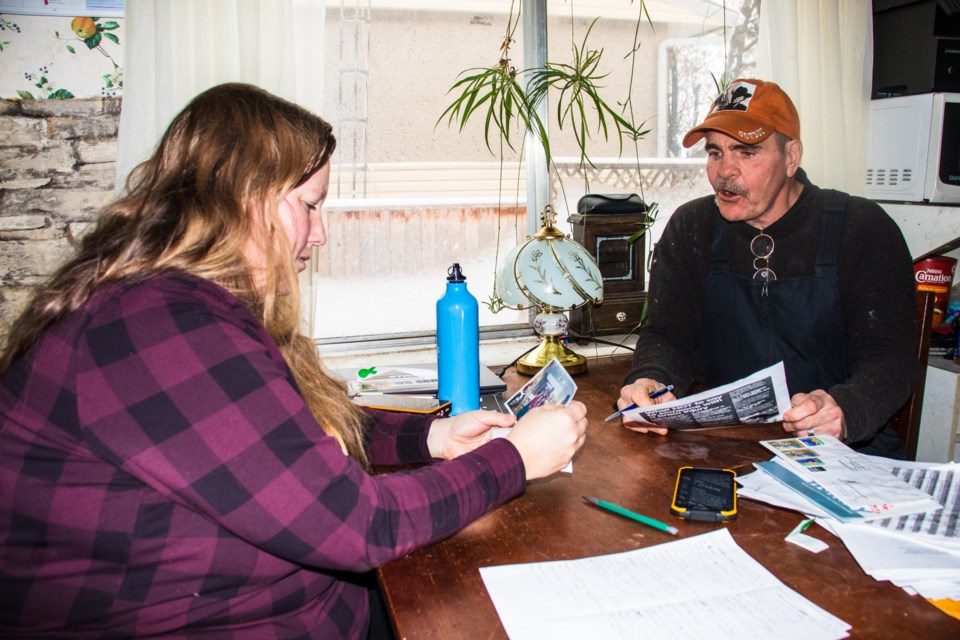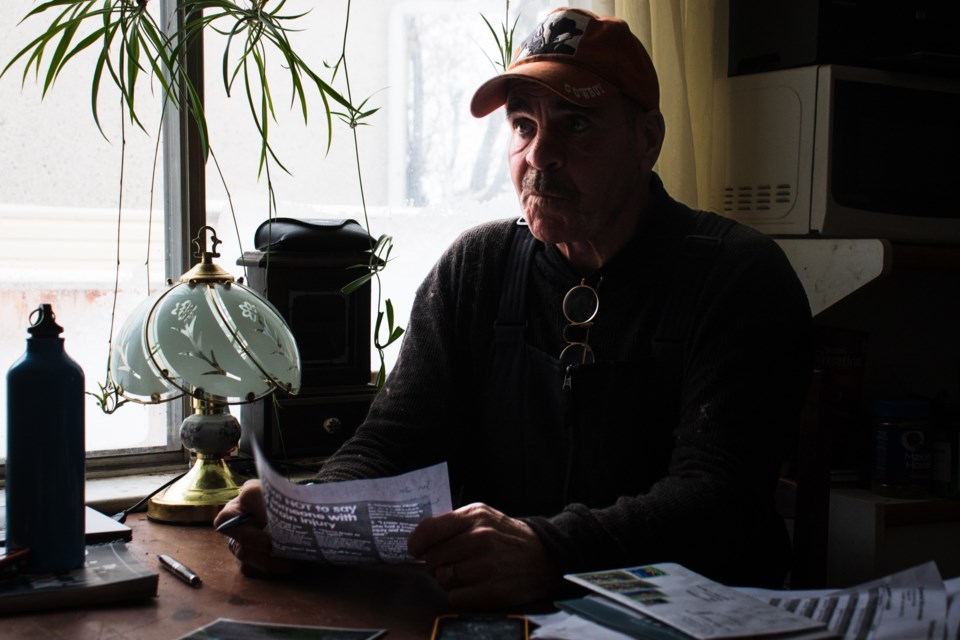Brain Injury Awareness Month takes place every June. The awareness campaign aims to bring awareness to the cause of brain injury and educate people about brain injury.
LAKELAND – Memory. The acquiring, storing, retaining, and retrieval of information. It’s a skill inherent to most people. But to some, it is as if their memories are akin to a shattered mirror, each shard a fragment of who they once were.
And to some, it is a mirror that shatters every day.
Living in a modest red house in Warspite that he, for 17 months, painted himself, Larry Saunders lives with a traumatic brain injury.
Inside his home, a quick glance of the surroundings reveals some slips of paper hugging corners, and every door in the home has clothes neatly hanging above them.
According to Saunders, the hanging clothes act as reminders - just like the calendar on the wall, its dates circled with red ink.
“I wouldn’t remember where they were if they were in my drawers... I wash everything, then I dry it, and hang it up,” says Saunders as he positions himself on his kitchen chair, flipping through some of the paperwork he keeps on the table - so he won’t forget about that either.
These are just some examples of how Saunders has adjusted his life due to a diffuse axonal injury – a form of traumatic brain injury.
The accident
In 2020, at the age of 56, Saunders was in a motorcycle accident. He hit his head against a large tree. But he could not remember what happened.
“The only reason I know all about this... is because it was told to me afterwards,” says Saunders.
For about a month following the accident, he was comatose, and when he woke up, he remembered nothing – not even his past. He knew and felt nothing.
He slides a piece of paper across the table - a letter from Glenrose Rehabilitation Hospital’s Social Work Department. It indicates he was admitted on July 12, 2020, to the Royal Alexandra Hospital due to traumatic brain injury.
He was then transferred to the Glenrose Rehabilitation Hospital on Aug. 7, 2020, and was discharged in September 2020.
Only through rehabilitation did he learn how to talk and walk again.
“Everything changed instantaneously... you’re a whole different person,” says Saunders.
Feeling nothing
Nearby, Jodie Conley nods her head, her features somber as she listens to his tale. Conley works for St. Paul Abilities Network (SPAN) as a support worker, under SPAN’s Alberta Brain Injury Network Program.
“There’s nothing you can do,” she says.
“It’s like this vulnerability... you didn’t ask for it,” to be a different person, says Conley. “You didn’t want it. But there’s nothing you can do to change this.”
Conley has been helping support Saunders since 2021. Reminding him of his bills, and making sure he remembers to eat, for example.
Saunders affirmed. “I could go through the rest of today and tomorrow without eati––,” he halts as if he just remembered something. After a brief pause, he smiles again. “I should write that down,” he says.
Conley laughs. “Good. Eat!”
Every day is a new day
Shifting the conversation back to the genesis of the discussion, Saunders explains how he felt living his daily life. “Every day is a new day... a new life starting out anew when I wake up in the morning.”
Every morning, he looks at the calendar to see what he must do, and he looks at pictures he has taken, along with other documentation methods he uses to record his daily life - just trying to remember how he lived yesterday.
“Just like this conversation here. I won’t remember much, if any of it, come tomorrow,” says Saunders.
Time, days, months – for Saunders, they’re no different from one another. They’re just numbers. When he wakes up, he feels nothing. No sadness, nor sorrow.
“The way I explained it to somebody a while ago is... I have no personality,” he says. “I don’t feel love... hate... nothing.”
Not even satisfaction.
Emotional blunting
Conley explains this is called emotional flattening or blunting.
“People experience a flattening of their emotional state and no longer experience the same emotional highs and lows as before.”
Using the fact that Saunders forgets to eat as an example, Conley says emotional flattening may be a contributing factor – because he experiences no satisfaction from eating.
He also has no sense of smell or taste. “I lost that too... every meal that I have is like eating cardboard,” he says. But at least, he can still tell if some foods are sweet or tart.
Keep moving forward
Conley too has a brain injury. She explains that a brain injury may be caused by different factors. For her, it started with what was initially diagnosed as strep throat.
After taking some medication, nothing worked, and it bloated. She was hurried to a hospital and recalled being unable to breathe. Her strep throat turned into retropharyngeal abscess – an infection between her windpipe and neck muscles – compromising her airway.
She went through five surgeries in 10 days, but she survived. She believes the resulting lack of oxygen during the ordeal may have been what caused her brain injury.
When she woke up, “I didn’t know who I was anymore... it really stripped me to the very core... I didn’t know how I’d comeback,” she says. But she knew that she was - and is - a good person.
Despite the challenges that come with brain injury, Conley and Saunders remain positive. While losing memory is undeniably difficult to come to terms with, “Now you get to build a new life the way you want it,” Conley says.
“It’s sort of like... what other choices do you have? I either lay down... or live every day,” she adds. “You just keep positive while going forward and just conquering daily life.”




